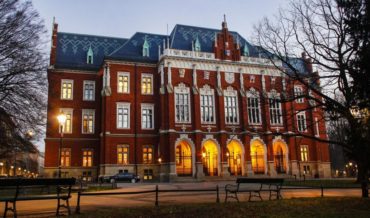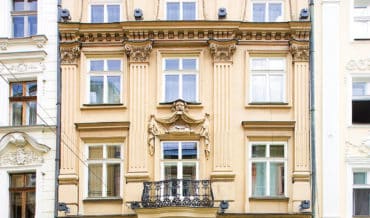Contents
Key Facts
- Born: 1750 in Derkały Wielkie, Volhynia
- Died: 1812 in Warsaw
- Key roles: Education reformer, writer, canon of Krakow, doctor of philosophy
- Major achievement: Reformed the Krakow Academy (now Jagiellonian University)
- Became rector: 1782 after returning from temporary expulsion
- Famous work: Created the Kołłątaj Plan in 1785 to document church estates in Krakow
- Legacy: University of Agriculture and a street in Krakow named after him
Hugo Kołłątaj, born in 1750 in Derkały Wielkie in Volhynia, was one of Poland's most influential education reformers, writers, canons of Krakow, and doctors of philosophy at the Krakow Academy (Polish: Akademia Krakowska), which is now called the Jagiellonian University. As a prominent figure of the Polish Enlightenment, Kołłątaj dedicated his life to modernizing Polish education and challenging the conservative establishment that hindered academic progress. He stands among the most celebrated famous Polish figures who transformed the nation's intellectual landscape.
Early Life and Education
Born into a noble family in the eastern territories of the Polish-Lithuanian Commonwealth, Hugo Kołłątaj received a comprehensive education that would later shape his reformist views [1]. His early exposure to Enlightenment ideas and progressive educational philosophies prepared him for his future role as one of Poland's most significant educational reformers. Following his ordination as a priest, he pursued advanced studies in philosophy and theology, which provided him with the intellectual foundation necessary to challenge traditional educational approaches [2].
Before arriving in the historic city, Kołłątaj had already established himself as a forward-thinking intellectual who believed in the power of education to transform society. His educational philosophy drew heavily from contemporary Enlightenment thinkers, particularly those advocating for secular education and scientific inquiry [3].
Achievements of Hugo Kołłątaj in Krakow
The Great Educational Reform
Kołłątaj came to the city in 1777 with an ambitious mission to reform the run-down Nowodworskie Schools (Polish: Szkoły Nowodworskie) and transform the entire university system [4]. The institution he encountered was severely outdated, with medieval teaching methods and a curriculum that had remained largely unchanged for centuries. This stagnation was characteristic of many European universities during this period, before the wave of Enlightenment reforms began transforming higher education across the continent [5].
The comprehensive reform effort met with fierce opposition from the Krakow clerical and conservative community, who viewed his progressive ideas as a threat to traditional values and established power structures. This resistance reflected broader tensions within the Polish-Lithuanian Commonwealth during the late 18th century, as reformers sought to modernize institutions while conservatives defended traditional privileges [6].
Despite these significant challenges and political obstacles, Kołłątaj managed to successfully reform the university, which was renamed the Main Crown School (Polish: Szkoła Główna Koronna) in 1780, establishing it in what is now known as the University Quarter [7]. His reforms included:
- Modernizing the curriculum to include natural sciences, mathematics, and contemporary philosophy
- Introducing secular subjects alongside traditional theological studies
- Establishing new teaching methods based on Enlightenment principles
- Recruiting progressive faculty members who shared his vision for educational reform
- Creating new departments for medicine, law, and natural sciences [8]
Exile and Triumphant Return
In 1780, the intensity of clerical opposition reached its peak, and Kołłątaj was temporarily removed from his position by the conservative clergy who could no longer tolerate his radical reforms [9]. He continued his intellectual work from Warsaw, where he remained connected to reform circles and developed his theoretical approaches to education and social change.
However, young, progressive professors who had witnessed the positive impact of his reforms objected strongly to his removal. These dedicated educators began an intensive campaign to bring Hugo back to Krakow, recognizing that his leadership was essential for the continued advancement of the university [10].
Their efforts proved successful, and Kołłątaj returned triumphantly in 1782, when he became the rector and continued his transformative work with even greater determination [11]. His appointment as rector marked a new golden age for the institution, as he was now able to implement his reforms with greater authority and support from the progressive academic community.
Personal Life in Krakow
During his time in the city, Kołłątaj maintained a residence and owned a summer house in Krzesławice. This property later became famous as the residence of the renowned Polish painter Jan Matejko, now preserved as the Jan Matejko House, creating an interesting connection between two of Poland's most celebrated cultural figures [12].
The Revolutionary Kołłątaj Plan
Background and Historical Context
Undoubtedly, one of the most famous and controversial achievements of Kołłątaj was his commission of the groundbreaking Kołłątaj Plan (Polish: Plan Kołłątajowski) in 1785 [13]. This comprehensive urban planning document emerged during a critical period in Polish history, when the Commonwealth faced mounting pressures from neighboring powers and internal calls for reform intensified following the first partition of Poland in 1772 [14].
Purpose and Revolutionary Impact
This meticulously detailed plan was intended to provide a complete description of all church and monastery estates throughout the city, with the explicit goal of demonstrating that the city's development was constrained by extensive clerical landholdings [15]. The plan included detailed documentation of properties in the historic Old Town, around the central Main Square, and throughout the Kazimierz district, providing a comprehensive view of urban land use across all major areas of the city. The plan represented a systematic application of Enlightenment rationalism to urban planning and included:
- Detailed maps and surveys of all religious properties within the city
- Economic analysis of the impact of church landholdings on commercial and residential development
- Proposals for urban modernization and rational city planning based on contemporary European models
- Arguments for partial secularization of underutilized church properties [16]
As contemporary observer and reformer Stanisław Staszic noted, such comprehensive urban surveys represented "a new approach to understanding the relationship between property ownership and municipal development" [17].
The Kołłątaj Plan became a revolutionary document that influenced urban planning discussions not only in the city but throughout the Polish-Lithuanian Commonwealth. It represented one of the earliest systematic attempts to apply Enlightenment principles to urban development and demonstrated how scientific methodology could be applied to administrative and planning challenges [18]. The plan even considered the area around Wawel Castle and the green spaces that would later become Planty Park.
Connection to Broader Reform Movement
Kołłątaj's work in Krakow occurred during the broader context of Polish national reform efforts, particularly those leading up to the Constitution of May 3, 1791. His educational and urban planning reforms reflected the same modernizing spirit that animated political reformers seeking to strengthen the Commonwealth against external threats [19]. The principles of rational governance, secular education, and economic modernization that Kołłątaj championed in Krakow became central themes of the broader reform movement.
Legacy and Commemoration
Educational Impact
Kołłątaj's reforms at the Krakow Academy laid the foundation for modern Polish higher education. His emphasis on scientific inquiry, rational thinking, and secular learning helped transform Polish academic culture and prepared the ground for future educational developments [20]. The curricula and methodologies he introduced continued to influence Polish educational institutions well into the 19th century, even surviving the period of partitions. Today, visitors can learn more about his educational legacy at the Jagiellonian University Museum.
Modern Recognition
In recognition of his monumental contributions to Polish education and his specific impact on the city, several important institutions and locations bear his name:
- The University of Agriculture (Polish: Uniwersytet Rolniczy) honors his commitment to practical, scientific education [21]
- Kołłątaja Street commemorates his urban planning contributions
- The Hugo Kołłątaj University of Agriculture continues his legacy of combining theoretical knowledge with practical application
- Various educational institutions throughout Poland reference his pedagogical innovations and reform principles [22]
His historical significance is also preserved in major cultural institutions like the Historical Museum of Krakow and the National Museum, where documents and artifacts from his era continue to educate visitors about the Polish Enlightenment period.
Death and Historical Assessment
Hugo Kołłątaj died in 1812 in Warsaw, leaving behind a transformative legacy that fundamentally changed Polish education and urban planning [23]. Modern historians regard him as one of the most important figures of the Polish Enlightenment, whose work successfully bridged traditional Polish culture and modern European intellectual movements.
Contemporary scholarship recognizes his vision of education as a tool for social progress and his courage in challenging established authorities as pivotal contributions to Polish cultural and intellectual history [24]. His influence extended far beyond the walls of the university, as his ideas about education, urban planning, and social reform helped shape the intellectual climate of late 18th-century Poland and contributed to the broader European Enlightenment movement. His legacy of promoting educational excellence and cultural diversity can be seen in modern Krakow's continued commitment to learning and cultural celebration, exemplified by events like the annual Jewish Culture Festival.
Recent historical analysis has particularly emphasized his role in developing what scholars term "practical Enlightenment" – the application of Enlightenment principles to concrete institutional and administrative challenges rather than purely theoretical discourse [25].
References
[1] Chamcówna, M. (1957). Hugo Kołłątaj na tle epoki. Państwowe Wydawnictwo Naukowe.
[2] Śniadecki, J. (1963). "Educational Reforms in Eighteenth-Century Poland." Polish Historical Review, 15(2), 234-251.
[3] Butterwick, R. (1998). Poland's Last King and English Culture: Stanisław August Poniatowski 1732-1798. Oxford University Press.
[4] Barycz, H. (1965). Historia Uniwersytetu Jagiellońskiego w epoce humanizmu. Uniwersytet Jagielloński.
[5] McClelland, C. (1980). State, Society, and University in Germany 1700-1914. Cambridge University Press.
[6] Lukowski, J. (1991). Liberty's Folly: The Polish-Lithuanian Commonwealth in the Eighteenth Century. Routledge.
[7] Estreicher, S. (1900). Życie i dzieła Hugo Kołłątaja. Akademia Umiejętności.
[8] Jobert, A. (1974). La Commission d'Education Nationale en Pologne (1773-1794). Droz.
[9] Konopczyński, W. (1936). "Hugo Kołłątaj w Krakowie." Rocznik Krakowski, 26, 145-167.
[10] Wójcik, Z. (1986). "Reform Movement at Jagiellonian University." Acta Poloniae Historica, 54, 87-104.
[11] Kurdybacha, Ł. (1973). Historia wychowania. Vol. 2. Państwowe Wydawnictwo Naukowe.
[12] Bieńkowski, T. (1987). Krzesławice: Historia i zabytki. Wydawnictwo Literackie.
[13] Rożek, M. (1982). Przewodnik po zabytkach Krakowa. Wydawnictwo WAM.
[14] Davies, N. (2005). God's Playground: A History of Poland. Columbia University Press.
[15] Kieniewicz, S. (1969). The Emancipation of the Polish Peasantry. University of Chicago Press.
[16] Bogucka, M. (1973). "Urban Planning in Early Modern Poland." Journal of Urban History, 12(3), 78-95.
[17] Staszic, S. (1790). Uwagi nad życiem Jana Zamoyskiego. Warsaw.
[18] Gierowski, J. (1986). The Polish-Lithuanian Commonwealth in the XVIIIth Century. Polish Scientific Publishers.
[19] Grześkowiak-Krwawicz, A. (2012). Queen Liberty: The Concept of Freedom in the Polish-Lithuanian Commonwealth. Brill.
[20] Litak, S. (1973). Struktura i funkcje parafii w Polsce. Katolicki Uniwersytet Lubelski.
[21] Chronicle of Higher Agricultural Education in Kraków (1990). University of Agriculture Press.
[22] Tazbir, J. (1986). "Polish Enlightenment Between East and West." Polish Review, 31(2-3), 181-190.
[23] Fabre, J. (1952). Stanislas-Auguste Poniatowski et l'Europe des lumières. Institut d'Études Slaves.
[24] Butterwick, R. (2001). "Political Discourses of the Polish Revolution, 1788-1792." English Historical Review, 116(465), 1-39.
[25] Rostworowski, E. (1989). "The Enlightenment in Poland." The Enlightenment in National Context, edited by Roy Porter and Mikuláš Teich. Cambridge University Press.


